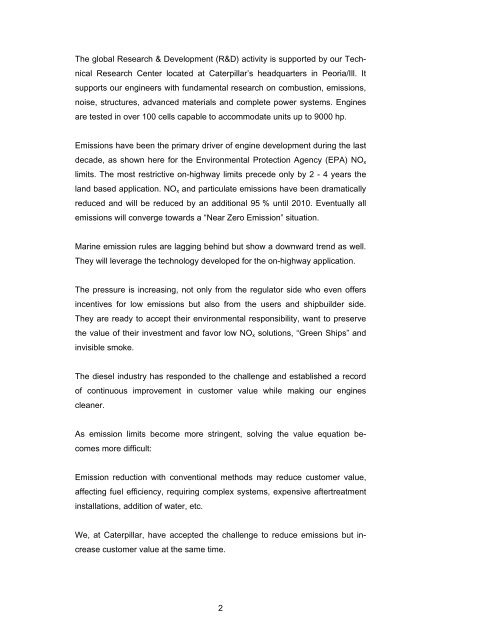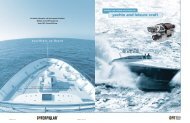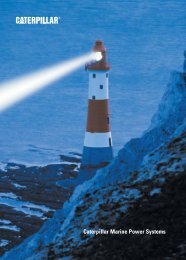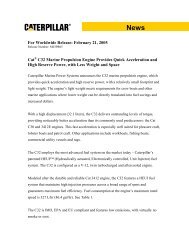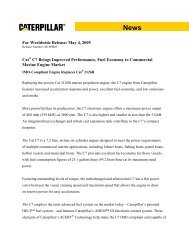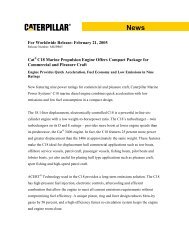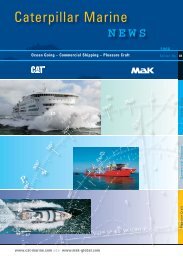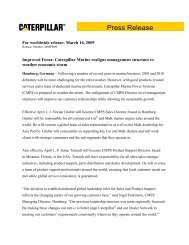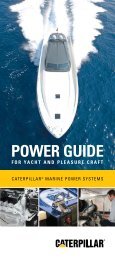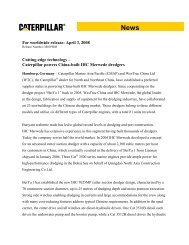ACERT Technology: How Caterpillar Engines Meet Current and ...
ACERT Technology: How Caterpillar Engines Meet Current and ...
ACERT Technology: How Caterpillar Engines Meet Current and ...
Create successful ePaper yourself
Turn your PDF publications into a flip-book with our unique Google optimized e-Paper software.
The global Research & Development (R&D) activity is supported by our Technical<br />
Research Center located at <strong>Caterpillar</strong>’s headquarters in Peoria/Ill. It<br />
supports our engineers with fundamental research on combustion, emissions,<br />
noise, structures, advanced materials <strong>and</strong> complete power systems. <strong>Engines</strong><br />
are tested in over 100 cells capable to accommodate units up to 9000 hp.<br />
Emissions have been the primary driver of engine development during the last<br />
decade, as shown here for the Environmental Protection Agency (EPA) NOx<br />
limits. The most restrictive on-highway limits precede only by 2 - 4 years the<br />
l<strong>and</strong> based application. NOx <strong>and</strong> particulate emissions have been dramatically<br />
reduced <strong>and</strong> will be reduced by an additional 95 % until 2010. Eventually all<br />
emissions will converge towards a “Near Zero Emission” situation.<br />
Marine emission rules are lagging behind but show a downward trend as well.<br />
They will leverage the technology developed for the on-highway application.<br />
The pressure is increasing, not only from the regulator side who even offers<br />
incentives for low emissions but also from the users <strong>and</strong> shipbuilder side.<br />
They are ready to accept their environmental responsibility, want to preserve<br />
the value of their investment <strong>and</strong> favor low NOx solutions, “Green Ships” <strong>and</strong><br />
invisible smoke.<br />
The diesel industry has responded to the challenge <strong>and</strong> established a record<br />
of continuous improvement in customer value while making our engines<br />
cleaner.<br />
As emission limits become more stringent, solving the value equation becomes<br />
more difficult:<br />
Emission reduction with conventional methods may reduce customer value,<br />
affecting fuel efficiency, requiring complex systems, expensive aftertreatment<br />
installations, addition of water, etc.<br />
We, at <strong>Caterpillar</strong>, have accepted the challenge to reduce emissions but increase<br />
customer value at the same time.<br />
2


